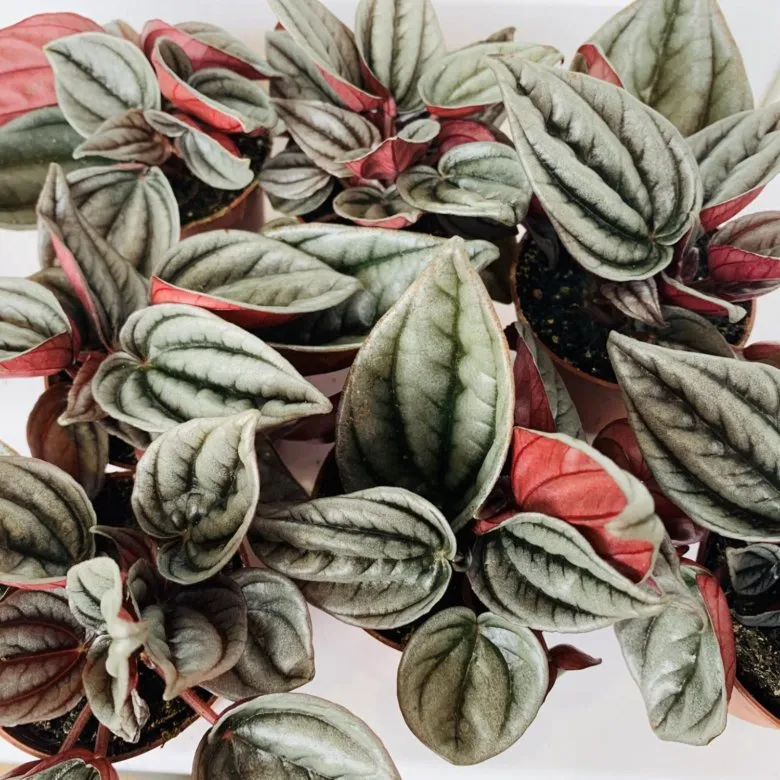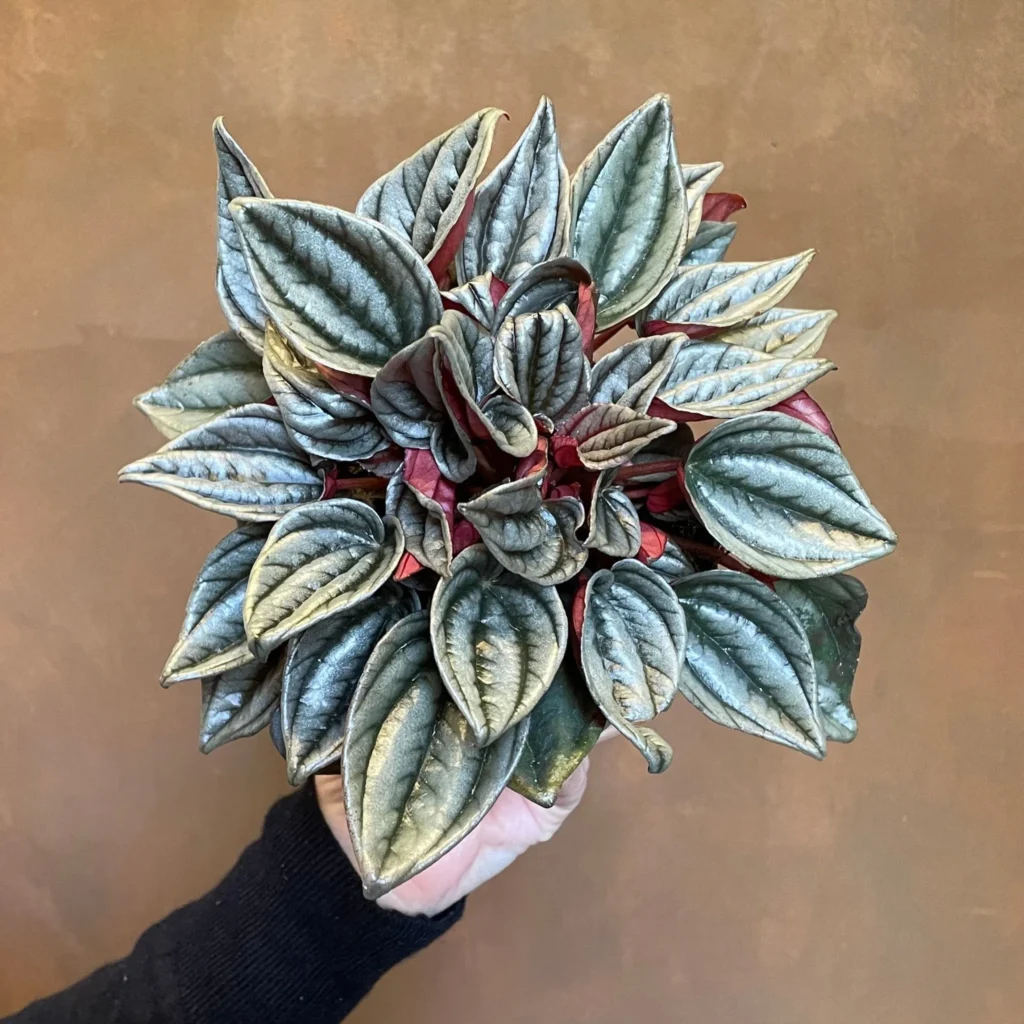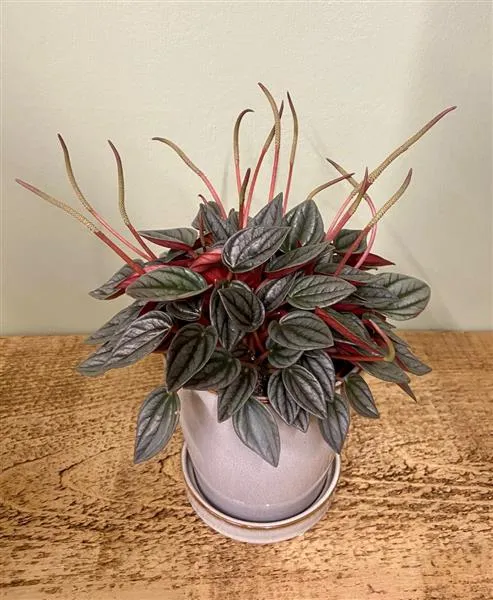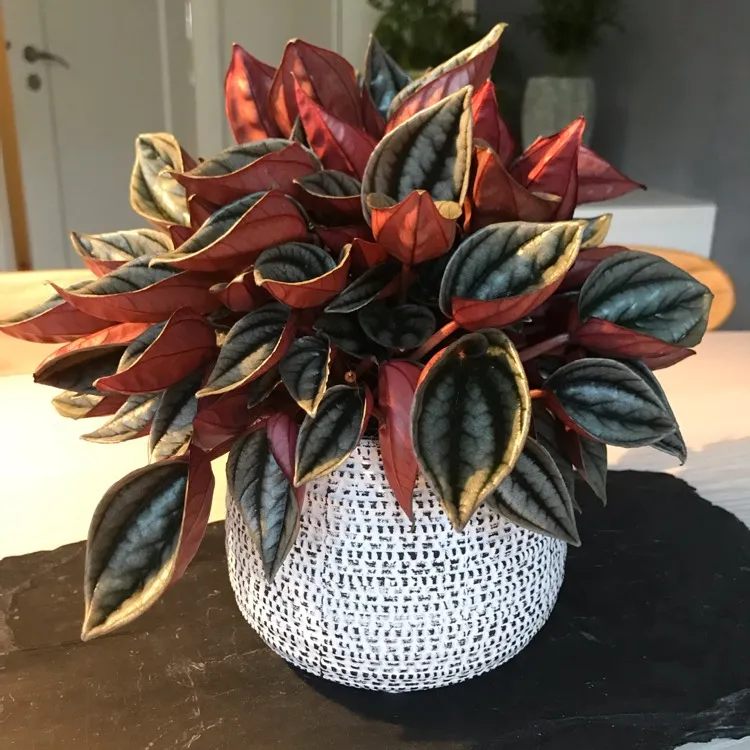Guide to Growing and Caring for Peperomia Mendoza
Peperomia Mendoza, a stunning and low-maintenance houseplant, has captured the hearts of plant enthusiasts worldwide. Known for its compact size and distinct foliage, this plant is perfect for both beginners and seasoned gardeners alike. Whether grown indoors or outdoors, Peperomia Mendoza adds a touch of greenery and elegance to any space.
Understanding Peperomia Mendoza

Origin and Natural Habitat
Peperomia Mendoza is native to the tropical and subtropical regions of Central and South America, particularly in countries like Brazil, Ecuador, and Colombia. These plants thrive in the understory of rainforests, where they receive filtered sunlight and enjoy high humidity. The plant’s natural habitat provides valuable insights into its care requirements, making it easier to replicate these conditions in your home or garden.
Unique Characteristics
Peperomia Mendoza is known for its distinctive foliage, often characterized by thick, waxy leaves that can vary in color from deep green to silver and red hues. Its compact growth habit makes it ideal for small spaces, and its ability to store water in its leaves allows it to tolerate periods of drought. Unlike many other houseplants, Peperomia Mendoza does not grow tall but instead spreads out, creating a lush, dense appearance.
You May Also Like: Grow And Care Peperomia Happy Bean Easily At Home
Planting Peperomia Mendoza

Choosing the Right Spot
Peperomia Mendoza can be grown both indoors and outdoors, but choosing the right location is crucial. Indoors, place it near a window where it can receive bright, indirect light. Avoid direct sunlight, as it can scorch the leaves. Outdoors, choose a shaded or semi-shaded area to mimic the plant’s natural habitat. If you live in a region with cold winters, it’s best to keep Peperomia Mendoza indoors, as it is sensitive to frost.
Soil Preparation
The key to a healthy Peperomia Mendoza lies in well-draining soil. A mix of peat, perlite, and orchid bark works best, providing aeration and allowing excess water to drain quickly. This prevents root rot, a common issue with many houseplants. Adding organic matter like compost can improve soil fertility and moisture retention, offering the plant a balanced environment to thrive.
Planting Steps
- Select a Pot: Choose a pot with drainage holes to prevent waterlogging.
- Prepare the Soil: Mix peat, perlite, and orchid bark in equal parts.
- Planting: Fill the pot halfway with the soil mix, place the plant in the center, and fill around it with more soil, pressing gently to secure.
- Water: Water the plant lightly, ensuring the soil is moist but not soggy.
- Location: Place the pot in a bright spot with indirect light.
Peperomia Mendoza Care

Light
Peperomia Mendoza thrives in bright, indirect light. Too much direct sunlight can cause leaf burn, while too little light can lead to leggy growth. If natural light is insufficient, consider using grow lights to supplement. A north or east-facing window is usually ideal. Rotate the plant occasionally to ensure even growth.
Soil
The best soil mix for Peperomia Mendoza is a well-draining one. Use a blend of peat moss, perlite, and a bit of orchid bark. This combination mimics the plant’s native habitat and ensures that roots receive adequate aeration. Avoid heavy, clay-based soils that retain too much moisture.
Water
Peperomia Mendoza prefers its soil to dry out slightly between waterings. Overwatering is one of the most common mistakes and can lead to root rot. A good rule of thumb is to water when the top inch of soil feels dry to the touch. Use room temperature water and avoid wetting the leaves to prevent fungal infections.
Temperature and Humidity
Peperomia Mendoza thrives in temperatures between 65-80°F (18-27°C). It does not tolerate cold drafts or temperatures below 50°F (10°C). High humidity levels are ideal, so consider placing a humidifier nearby or misting the plant occasionally. However, ensure good air circulation to prevent fungal issues.
Fertilizer
Feed Peperomia Mendoza with a balanced, water-soluble fertilizer diluted to half strength every 4-6 weeks during the growing season (spring and summer). Over-fertilizing can lead to salt buildup in the soil, which may harm the plant. Reduce feeding frequency during fall and winter when the plant’s growth slows.
Pruning
Pruning helps maintain the shape and encourages bushier growth. Trim leggy stems and any damaged or yellowing leaves using sterilized scissors. Pruning can be done throughout the year, but it’s best performed during the growing season. Regular pruning also helps improve air circulation around the plant.
Popular Varieties of Peperomia Mendoza
- Peperomia Mendoza Green: Known for its vibrant green leaves and compact growth, this variety is popular among indoor gardeners.
- Peperomia Mendoza Red: This variety has striking red-tinted leaves, adding a pop of color to any collection.
- Peperomia Mendoza Variegata: Featuring variegated leaves with cream, green, and silver tones, it’s a favorite for its unique appearance.
Propagating Peperomia Mendoza

Methods
Propagation of Peperomia Mendoza can be done through stem cuttings, leaf cuttings, or division. The most common method is stem cuttings:
- Stem Cuttings: Cut a healthy stem with at least one leaf attached. Place the cutting in water or directly into moist soil, and roots will develop within a few weeks.
- Leaf Cuttings: Cut a healthy leaf and place it on moist soil. New plants will begin to sprout from the base of the leaf.
- Division: If the plant has grown too large, divide it into smaller sections during repotting. Each section should have roots and at least one stem.
For best results, use a rooting hormone when propagating stem cuttings to speed up root development. Keep the cuttings in a warm, humid environment to encourage growth. I’ve found success by placing cuttings in a mini greenhouse or covering the pot with a plastic bag to retain moisture.
Potting and Repotting
Choosing the Right Pot
Select a pot that is slightly larger than the plant’s current size, with ample drainage holes. Terra cotta pots are ideal as they allow excess moisture to evaporate, reducing the risk of root rot.
Repotting Steps
Repot Peperomia Mendoza every 2-3 years or when it outgrows its current pot. Here’s how:
- Remove the Plant: Gently remove the plant from its pot, being careful not to damage the roots.
- Check the Roots: Trim any damaged or rotting roots before repotting.
- Prepare the New Pot: Fill the new pot with fresh soil mix.
- Plant: Place the plant in the new pot and fill in with soil, pressing gently around the base.
- Water: Water lightly and place the plant in its usual spot.
Common Pests & Plant Diseases

Pest Identification
Common pests that affect Peperomia Mendoza include spider mites, mealybugs, and aphids. These pests can be identified by their appearance: spider mites are tiny and leave webbing, mealybugs are white and cottony, and aphids are small, green insects found on new growth.
Disease Identification
Peperomia Mendoza is susceptible to fungal diseases such as root rot and leaf spot, usually caused by overwatering or poor air circulation. Symptoms include yellowing leaves, black spots, and wilting.
Treatment and Prevention
- Pests: Treat with insecticidal soap or neem oil. Regularly inspect the plant to catch infestations early.
- Diseases: Improve air circulation, reduce watering frequency, and remove affected leaves. Fungicides can also be used if necessary.
Troubleshooting Common Problems
Poor Flowering
Peperomia Mendoza rarely flowers indoors. If flowering is desired, provide more light and avoid over-fertilizing with high-nitrogen fertilizers, as they can inhibit blooming.
Yellowing Leaves
Yellowing leaves are often a sign of overwatering, poor drainage, or nutrient deficiency. Adjust your watering routine and check soil conditions.
Stunted Growth
Stunted growth can result from low light, poor soil, or insufficient nutrients. Evaluate the plant’s growing conditions and adjust as needed.
Fungal Infections
Fungal infections can be managed by improving air circulation, avoiding overhead watering, and using fungicides if necessary.
Seasonal Care Tips
Spring and Summer
During the growing season, ensure Peperomia Mendoza receives adequate light and water. Increase feeding frequency and repot if necessary.
Fall and Winter
Reduce watering and feeding during the cooler months. Keep the plant away from cold drafts and maintain consistent humidity levels.
Conclusion
Peperomia Mendoza is a versatile and charming plant that brings a touch of nature to any setting. With proper care and attention to its unique needs, it can thrive and enhance the beauty of your home or garden. Whether you are propagating new plants, dealing with pests, or simply enjoying its lush foliage, Peperomia Mendoza is a rewarding addition to any plant collection. If you have any other queries, feel free to ask me on my Instagram and WhatsApp.
